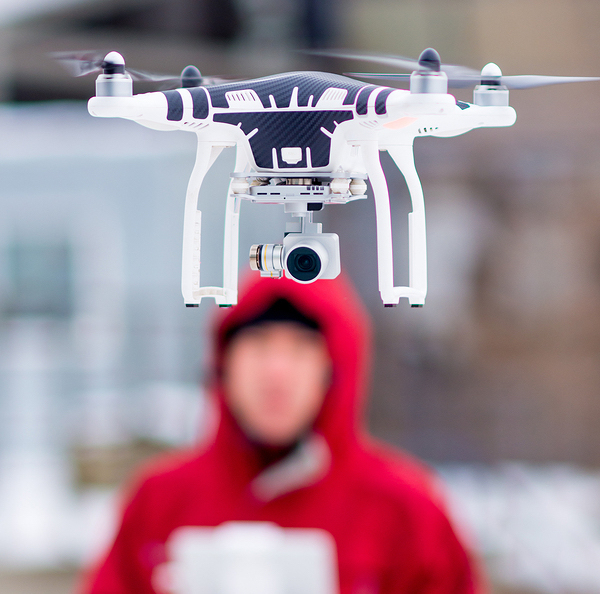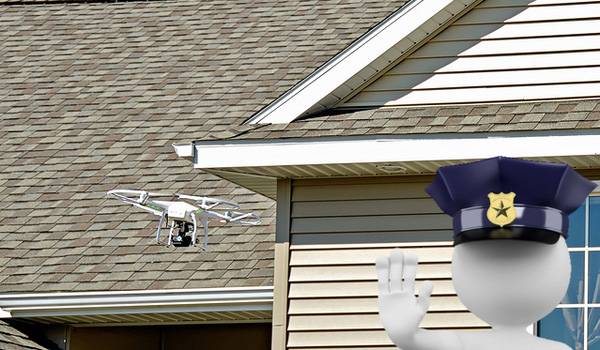All that it takes is a look at the news to see how easy it is for drone pilots to get in trouble with the law. When these mini aerial vehicles, known as unmanned aircraft systems (UAS), first hit the scene in a big way a few years ago, the possibilities seemed endless.
Some people now believe that UAS package delivery isn’t far off. Drones are frequently used to photograph real estate, too. Their ability to go where people don’t go and bring back images that would otherwise be difficult or impossible makes them perfect for the Home Inspection industry.
But with all of the excitement, the FAA had a real problem. Popularity was immense, and it remains so. And so is the risk of injury, property damage and privacy issues with drones in the wrong hands. But finally, new FAA drone regulations for commercial use were released in June. If you are itching to try a UAS on the job, here’s what you need to know.
Drones are Expensive, Highly Technical Equipment
A UAS might seem almost like a toy, but they are anything except cheap. At least that’s the case with drones that are durable and dependable enough to use in home inspection work. One false move and hundreds or even thousands of dollars worth of equipment might be obliterated in one mishap.
Drones can create a lot of havoc if the pilot isn’t experienced. And sometimes an epic crash results, no matter how much experience the pilot has. It happens all the time.
The FAA Requires Certification
Although you could, at least in theory, buy a drone online and take it to work the next day, the FAA has something to say about it. To be legal, the remote pilot in command of the UAS must be certified or under the direct supervision of someone who is.
Pilot certification requires a demonstration of aeronautical knowledge through either FAA testing or possessing a Part 61 pilot certificate and completing the FAA online training course. You must also be vetted by TSA and be at least 16.
Safe Operation is an Emerging Discipline
As drone technology becomes more prevalent and popular, more issues with the safe handling and operation of UASs will become apparent. For now, the FAA uses a commonsense approach. Be safe and don’t take unnecessary risks with people or property. That appears to be the general rule. Here are some of the finer points:
- No operation directly above unprotected people
- No operation inside a covered stationary vehicle
- Only fly during daylight, or during twilight with proper anti-collision lights
- Don’t operate a drone from a moving aircraft
- Don’t fly it where you can’t see it
- Don’t be reckless
- Always perform a pre-flight inspection
- Only carry a load that the UAS is rated to handle
Basically, don’t take the drone into an area where could harm people, damage property or is likely to crash.

Privacy is a Big Deal
One big issue with drones is the invasion of privacy. As a home inspector, that shouldn’t be a chronic problem. But you never know, and you can’t be too careful. If the drone you’re piloting and its camera come too close to a neighboring property, the owner might take issue.
The National Telecommunications and information Administration (NTIA) makes the following suggestions, which are voluntary.
- Let anyone in the vicinity know that you’ll be piloting a drone with a camera and that their image might be captured on video.
- Never deliberately take video or pictures of anyone without their permission.
- Don’t fly over someone else’s private property.
- Only gather personal data if it’s necessary for the job, and discard it as soon as you can.
- If some data must be kept, keep it secure.
- Delete data, photos or video if the subject of the images and data asks you to.
- Be reasonable in discussing privacy and safety concerns with others.
- Don’t harass anyone with the drone. It’s also a good idea not to harass animals.
Drone technology is very likely here to stay. With it will eventually come more improvements in the aircraft and the rules governing use.
UASs are a perfect match for the home inspection industry because they enable visual inspection of areas, such as roofs, that can’t be reached or can’t be reached safely. That’s why ICA School has introduced a new drone module specifically for using drones in roof inspections. You should check it out.
Technology is a beautiful thing. The future of home inspecting might hold no ladders and walking roofs could become a thing of the past. And that makes the home inspection industry safer. If you want to make your inspections even more advanced, download home inspection app for Android and take your inspection reporting to new heights.

